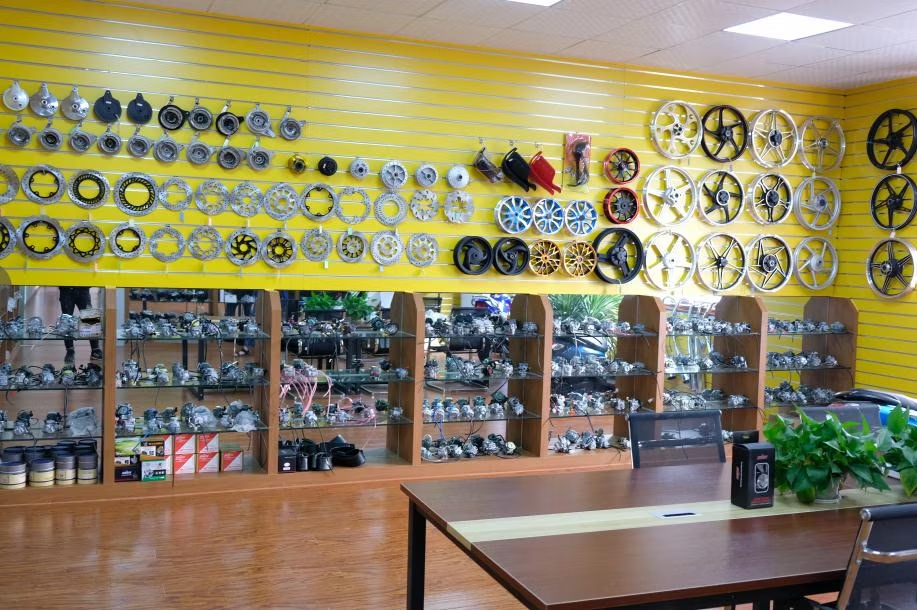Must-Have Motocross Gear: Raise Your Riding Experience Today
Must-Have Motocross Gear: Raise Your Riding Experience Today
Blog Article
Understanding the Vital Parts of a Bike: A Comprehensive Guide for Lovers
For motorcycle lovers looking to raise their riding experience and guarantee their bikes run smoothly, comprehending the essential elements of a motorbike is vital. Each component, from the engine's elaborate operations to the essential duty of the stopping mechanisms, not only influences efficiency however likewise security and convenience. This overview will go through the essential components that every biker must know with, enabling notified options in both upkeep and possible upgrades. As we start this exploration, one must ask: how does each component communicate to develop the smooth trip every lover looks for?
Engine Parts

The camshaft plays a crucial function in regulating the timing of the engine's valves, ensuring the exact opening and closing necessary for reliable fuel and air consumption, in addition to exhaust expulsion. This timing is critical to preserving optimal engine efficiency and efficiency. Additionally, the carburetor or gas injection system, depending on the motorcycle model, is in charge of blending air with fuel in the appropriate proportion for combustion.
The air conditioning system, either air or liquid-based, works to maintain the engine's temperature level within operational restrictions, avoiding overheating and making sure long life - motocross parts nz. Each component, thoroughly designed and integrated, adds to the seamless procedure of the engine, specifying the bike's power outcome and general performance
Transmission System
Important to the bike's capability, the transmission system makes certain efficient power transfer from the engine to the wheels. This system comprises several important parts, consisting of the clutch, transmission, and last drive, each playing an essential duty in translating the engine's power into movement. The clutch, generally operated by a hand lever, serves to disengage the engine and involve from the transmission, permitting smooth gear modifications and controlled acceleration.
The gearbox, commonly referred to as the transmission appropriate, consists of a set of gears that riders can by hand change with to readjust the bike's rate and torque output. These equipments are organized in a sequence that allows the motorbike to speed up smoothly and preserve optimal engine efficiency throughout different speeds. Many motorcycles utilize a sequential gearbox, needing the rider to shift equipments in a fixed order.
Braking Systems
While comprehending the transmission system is essential to taking advantage of a bike's power, similarly essential is the capability to manage and quit that power properly, which is where braking mechanisms come right into play. Brakes are vital for security and performance, providing the cyclist with the needed control to navigate numerous terrains and problems. Commonly, motorbikes feature 2 Check This Out kinds of stopping systems: disc brakes and drum brakes.
Disc brakes are a lot more common in modern motorbikes due to their remarkable performance. This system uses better warmth dissipation, consistent efficiency, and improved quiting power, particularly in wet problems.
On the other hand, drum brakes, though less usual, are still found in some motorbikes. They function by pushing brake shoes against the internal surface area of a drum connected to the wheel. While typically much less efficient in heat dissipation and stopping power, drum important source brakes are easier and a lot more cost-effective.
Recognizing these stopping systems' nuances enables motorcyclists to keep their bikes correctly and value the design that makes certain effective and secure stopping.
Suspension and Steering
Suspension and guiding systems are essential components that substantially affect a motorcycle's handling and experience convenience. The suspension system, including forks at the front and shock absorbers at the rear, absorbs roadway irregularities, boosting security and control. Front forks, look at more info inverted or typically telescopic, compress and rebound to minimize impacts, while rear shock absorbers keep tire call with the roadway, critical for traction and safety and security.
Steering, centered around the handlebars, links the motorcyclist to the motorbike's directional control. The guiding head bearings guarantee smooth operation, enabling specific ability to move. Proper positioning and upkeep of these bearings are crucial for foreseeable guiding action and lowering motorcyclist tiredness.
The suspension's adjustability is another crucial element; preload, damping, and rebound settings allow customization to suit various riding problems and styles. This adaptability is necessary for optimizing efficiency, whether browsing urban streets or dealing with rugged trails. Innovations like electronic shock absorber use real-time modifications, enhancing adventure high quality throughout diverse surfaces.

Electric Systems
After making sure a smooth and controlled trip via effective suspension and steering systems, interest transforms to the electrical systems, a crucial aspect of modern-day motorcycles. These systems play a crucial function not just in starting the engine but additionally in powering different parts that improve the capability and security of the bike.
At the heart of a motorcycle's electric system is the battery, which shops electrical energy needed for starting the engine and powering supporting systems - motocross gear. The generator or generator, coupled with the rectifier-regulator, ensures the battery remains billed while the motorcycle is in operation, converting power right into electric power and preserving voltage degrees
The ignition system, one more critical element, is in charge of stiring up the air-fuel mixture in the engine's cylinders. Modern motorcycles frequently use an electronic ignition system, providing higher effectiveness and integrity contrasted to typical systems.
Lighting systems, including headlights, tail lights, and indicators, are also important, making sure presence and safety and security for the rider. Additional electronic elements such as sensing units, control devices, and displays add to innovative features like gas shot management, anti-lock stopping systems (ABDOMINAL), and digital control panels, additionally boosting the riding experience.
Conclusion
An extensive comprehension of a motorcycle's important components, consisting of the engine, transmission system, stopping devices, suspension, steering, and electrical systems, is essential for lovers aiming to optimize safety, performance, and comfort. Proficiency of these aspects allows for notified decisions pertaining to upkeep and upgrades, inevitably enhancing the riding experience. By incorporating this expertise, bikers can guarantee their motorcycles operate at peak performance and dependability, thereby making the most of both satisfaction and longevity of their cars.
For motorbike fanatics looking to elevate their riding experience and ensure their bikes run efficiently, understanding the crucial components of a motorbike is extremely important.Essential to the bike's functionality, the transmission system makes sure reliable power transfer from the engine to the wheels.While understanding the transmission system is essential to using a motorbike's power, just as important is the capability to control and stop that power effectively, which is where braking devices come right into play. Generally, motorcycles include two kinds of braking systems: disc brakes and drum brakes.
An extensive comprehension of a bike's necessary components, consisting of the engine, transmission system, stopping devices, suspension, steering, and electric systems, is indispensable for fanatics intending to maximize comfort, efficiency, and security.
Report this page